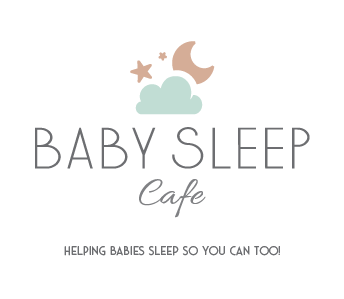EVERYTHING IS GOING GREAT!
Do you ever find yourself breathing a sigh of relief knowing that your child has finally gotten into a rhythm with sleep?You know when they will go to sleep and when they will wake up.You finally can predict nap times, awake windows, and then finally some “me time” AKA do the laundry, make dinner, pick up the house, take a bite of a leftover waffle, heat up your coffee for the 10th time, etc.?
ALL OF A SUDDEN
Then all of a sudden…your baby throws you a curveball (once again).Your little angel might start skipping a nap.Then they might begin waking up early.Maybe they take a longer time to fall asleep at bedtime.Perhaps they have a hard time falling asleep for naps as well.Maybe they all of a sudden are having shorter naps.If your child is dealing with any of these issues, it might just be time to drop a nap.
5 SIGNS TO LOOK FOR
As mentioned above, there are usually 5 signs that it is time to drop a nap.Sometimes your baby exhibits one, a few signs or they might do all of them.I tell parents that just because any of these signs happen once or twice, they shouldn’t automatically think it’s time to move on to the next nap stage.However, if they consistently do these things over a period of 1-2 weeks, it’s time to drop that nap.
1. FIGHTING THE LAST NAP OF THE DAY
One indicator of your child letting you know it’s time to drop a nap is frequently skipping a nap, or fighting the last nap of the day.Your child might get extra cranky and whiny when you head to the nursery and might just end up playing or literally being sad the whole time that they are supposed to be napping.They simply aren’t tired.They have most likely had adequate daytime sleep. Your baby should only take about 10-15 minutes to fall asleep after the bedtime routine.If they start lengthening that time, they have gotten too much sleep during the day.As they grow, their daytime sleep decreases.Pay attention to their age and the amount of sleep that they are getting and if they are exceeding the amount of sleep that they should get in a 24 hour period, it might be time to drop the nap.
2. EARLY MORNING WAKE-UPS ARE MORE FREQUENT
Just when you were able to drink your cup of coffee without reheating it several times, your baby has started waking up early.Ughh!If this keeps happening, some obvious things to rule out would be any light coming in (room should be totally dark), sound machine has stopped working,your baby has wet through his diaper (nighttime diapers are ideal or even diaper inserts for preventing leaks).If you have ruled out these things, it might be time.
3. YOUR BABY IS WITHIN THE AGE RANGE TO DROP A NAP
Typical ages are as follows:
0-3 months old baby will be taking 4+ naps
~4 months old they will have 4 naps per day
~5-7 months old they will go down to 3 naps a day
~6-9 months they might transition into 2 naps a day
~11-16 months they will transition into 1 nap a day
~2.5-3 years they will stop napping
Please keep in mind these are VERY general.Some babies start dropping naps sooner and some take a longer time.There is no magic number, but these are fairly common.If your baby is napping beautifully and sleeping well at night, don’t change anything!
4. FALLING ASLEEP FOR NAPS IS GETTING LONGER
Having a hard time falling asleep for naps is similar to having a hard time falling asleep at bedtime.If you find that your child has trouble falling asleep during naptime, the first thing you will want to check is to make sure that their awake window is accurate.If too much time has passed for their next nap, or not enough time has passed, your child might be over or undertired.If you have ruled this out, and your child tosses and turns, whines or cries during naptime and nothing has changed in his routine, it is time to drop the nap.
5.BABIES NAPS ARE GETTING SHORTER
If your baby has gone from napping for a certain amount of time to suddenly waking up after 20-30 minute, this is an indicator that they need to drop a nap.Too much sleep, or too little time in-between sleep can cause your little one to start taking shorter naps.
NAP STATISTICS
Around 4 months of age, babies start to finally get in the rhythm of taking approximately 4 naps a day for 4 hours total.Sometimes these naps can be 1 hour long each.Most likely, though, these naps may end up being 2 longer naps and 2 shorter naps.Typically the naps will be 1 long nap in the morning (1.5 hours).Then they might do a shorter nap of 30 minutes.Usually they will take a longer afternoon nap; another 1.5 hours.Finally, they will end their day with a shorter cat nap; a few hours before bedtime.
Sometime around 5-7 months, your little one will drop a nap and start taking 3 naps a day for a total of 3.5 hours.
Nearing 6-9 months, your child’s awake windows will stretch and they may go down to 2 naps a day.These are typically 1.5 hours each (morning and afternoon).Personally, this is the sweet spot for naps as you can finally have some reassurance that your child will nap around 10 am and 2 pm every day.This schedule can last anywhere between 11-16 months.
The next nap to drop is around age 1.Your child will start napping once a day in the afternoon for about 2-2.5 hours.This will decrease to about 1.5-2 hours as they near the 2 year mark.
WHY IS THIS HAPPENING
As your baby gets older, their sleep needs change.They are growing and changing daily.As they get older, the amount of sleep that they need will decrease and start consolidating into longer stretches at night and less daytime sleep.An infant will sleep a total of 14-17 hours in a 24 hour period, whereas your 2 year old only needs a total of 11-14 hours.As a result, their naps during the day might need to decrease so that they can get better sleep at night.
DEALING WITH NAP TRANSITIONS
So, now what?How do you deal with these nap transitions?Nap transitions can take anywhere between a few days to a few weeks to establish the new nap routine.Following appropriate awake windows will help determine when that next nap will be.Paying attention to awake windows will be your best friend.Click the link: Awake Window Chart to print out this chart to help you with your child’s sleep journey.As always, I like to remind parents that every child is different and these are just “typical” suggestions for awake times.This is a good place to start though.
Also, for a better understanding of Awake Windows, read my recent blog post Awake Windows.
Once you’ve determined that your child might be ready to drop a nap, follow these suggestions to make the transition easier.
STEP 1:CONSISTENT BEDTIME/NAPTIME ROUTINE
If a consistent bedtime and naptime routine isn’t happening already, you will need to make sure that this is in place so that your baby knows the signs that it is time to sleep.Feel free to download my free bedtime routine to help establish this essential habitFree Bedtime Routine.Make sure that you are consistently implementing your bedtime routine during nap times as well as bedtime.Obviously the nap routine will be modified, but make sure that you are using a sound machine, blackout blinds and swaddle/sleepsack.
STEP 2: PUSH AWAKE WINDOWS 10-15 MINUTES LONGER
This step can be tricky as you don’t want an overtired baby.Start by pushing naptime 10-15 minutes later.Every few days, push that time by another 10-15 minutes until you get the ideal time for your child.As you start to see those sleepy signals (rubbing eyes, fussy, blank stares), you will want to change your activity to distract your child.Try moving to a different part of the house or introducing a new toy that she hasn’t played with today (or even a favorite toy).Sometimes filling the kitchen sink with water is the best distraction.What about a dance party? Does your toddler need a snack?This can be a good distraction as well.
STEP 3:EXPOSE THEM TO LIGHT
Perhaps you need to go outside for a bit.This is my go-to solution to distract your child.Natural light signals the body that it is time to be awake.Going outside can help him to wake up and distract him a bit.Be careful if you put her in a stroller or carrier as this might lull her to sleep. I recommend going outside in the morning as well as the evening.In the morning this helps to signal our brain that it is time to wake up.This might be as simple as opening the curtains, but going outside is ideal.On the contrary, going outside in the evening as the sun is going down, helps to release melatonin in their body signaling their brain that it is time to sleep.
STEP 4:BE FLEXIBLE WITH BEDTIME
While your child is transitioning from naps, their bedtime might be a little off.If your baby typically goes to bed around 7, due to the transitions that are happening during the day, they might have an earlier than normal bedtime and that’s ok.This is to be expected.Don’t stress out about it.Know that your consistency during the day will resolve those early bedtimes within a few weeks.
If your baby is giving you signals laid out above that it is time for that nap transition, I encourage you to do it.You can start today.With patience and time, your child will soon be on his new nap schedule.
As always, I’m here for you if you need to book a 30 minute phone call Scheduling Link to help you resolve this, or if you need more help (sleep plan), let’s get your child sleeping again!Go to Baby Sleep Cafe to see how I can help your baby sleep better; and let’s be real…you too!


